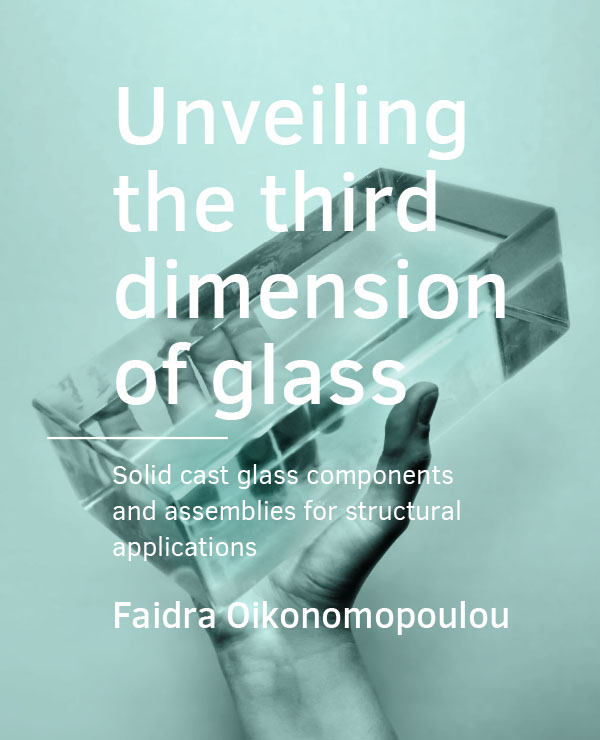Material compositions and production methods for solid cast glass components
DOI:
https://doi.org/10.7480/abe.2019.9.4086Abstract
Glass can be made by different manufacturing processes and by numerous of varied recipes that in return provide the material with different properties. Owing to their workability in lower melting temperatures and the corresponding decreased manufacturing costs, soda-lime and borosilicate glass types are preferred for cast glass applications in structures. Glass can be cast in two ways: primary and secondary casting. In primary casting, glass is molten from its primary raw ingredients, whereas in secondary casting, solid existing pieces of glass are re-heated until the (semi-) liquid mass can flow and be shaped as desired. The main process of primary casting is hot-forming (melt-quenching) and of secondary casting is kiln-casting. The principal difference between the two methods, besides the initial state of glass, is the required infrastructure. In hot-forming, molten glass from a furnace is poured into a mould and is then placed in another, second furnace for annealing. In contrast, kiln-casting employs a single kiln for the melting of the (already formed) glass into the moulds and for the subsequent annealing process and requires lower operating temperatures. In both methods the annealing process is similar. The annealing schedule is influenced by numerous factors that cannot be easily simulated as a complex non-linear time dependent multi-variable analysis is required. As a result the annealing schedule of large 3-dimensional cast units is commonly empirical. Different mould types, disposable or permanent, can be used for casting glass objects. The choice of mould mainly depends on the production volume and desired level of accuracy of the glass product, and is in practice usually cost and time driven. Currently, there is no standard to determine the design strength of solid cast glass objects for structural applications in architecture. Based on the assumption that the increased volume of cast glass can lead to a higher amount of randomly distributed flaws in the mesostructure, the bending strength of cast glass is expected to be comparable but slightly less than that of standard float glass.


